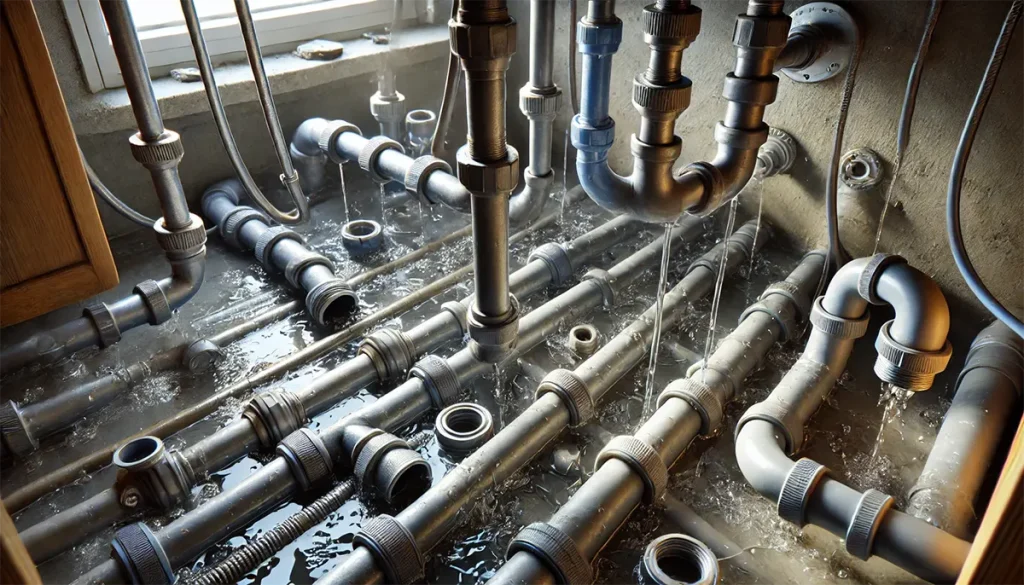The integrity of gas line installations is critically dependent on the quality of sealing and connection techniques employed. Inadequate attention to these crucial aspects can lead to significant safety hazards, operational inefficiencies, and potential legal liabilities. This section will elucidate the importance of proper sealing and connection methods, outline the consequences of poor techniques, and provide comprehensive guidelines for ensuring optimal system performance and safety.
Importance of Proper Sealing and Connection Techniques
Effective sealing and connection techniques are paramount in gas line installations for several reasons:
- Safety Assurance: Properly sealed connections prevent gas leaks, which are a primary safety concern in any gas system.
- System Integrity: Well-executed connections ensure the long-term reliability and durability of the gas line system.
- Operational Efficiency: Correct sealing techniques contribute to the optimal performance of gas appliances by maintaining proper pressure and flow.
- Regulatory Compliance: Adherence to industry standards and local regulations often requires specific sealing and connection methods.
Consequences of Poor Sealing and Connection Techniques
The ramifications of inadequate sealing and connection practices can be severe and far-reaching:
- Gas Leaks: The most immediate and dangerous consequence, potentially leading to fire, explosion, or asphyxiation hazards.
- System Inefficiencies: Poor connections can result in pressure losses, reducing the efficiency of gas appliances.
- Increased Maintenance Costs: Improperly sealed connections often require more frequent inspections and repairs.
- Environmental Impact: Gas leaks contribute to greenhouse gas emissions and can have detrimental effects on local ecosystems.
- Legal and Financial Liabilities: Failures resulting from poor connections can lead to legal actions and significant financial penalties.
Best Practices for Sealing and Connection Techniques
To mitigate the risks associated with poor sealing and connection techniques, the following best practices should be meticulously observed:
Use Appropriate Sealing Materials:
- Employ thread sealants specifically approved for use with gas lines.
- Select materials compatible with the type of gas and piping material in use.
- Avoid using improvised or non-approved sealing materials, such as general-purpose plumbing tape.
Proper Application of Thread Sealants:
- Apply sealants in the direction of the thread to ensure even coverage.
- Use the appropriate amount of sealant – excess can lead to system contamination, while insufficient amounts may not provide an adequate seal.
- Allow proper curing time as specified by the sealant manufacturer before pressurizing the system.
Correct Tightening Techniques:
- Use calibrated torque wrenches to achieve the specified tightening force.
- Follow the manufacturer’s guidelines for tightening sequences in flanged connections.
- Avoid over-tightening, which can damage threads or deform sealing surfaces.
Flange Alignment and Gasket Installation:
- Ensure proper alignment of flanges before tightening.
- Use appropriate gasket materials and verify correct gasket positioning.
- Implement controlled bolt-tightening procedures to ensure even compression of gaskets.
Quality Control Measures:
- Implement a rigorous inspection process for all connections before system pressurization.
- Utilize appropriate leak detection methods, such as soap bubble tests or electronic gas detectors.
- Document all connection procedures and test results for future reference and compliance purposes.
Professional Training and Certification:
- Ensure that all personnel involved in gas line installations are properly trained and certified.
- Regularly update training to keep abreast of new techniques and regulatory requirements.
Use of Proper Tools and Equipment:
- Employ specialized tools designed for gas line installations, such as flaring tools and pipe cutters.
- Maintain and calibrate tools regularly to ensure accuracy and reliability.
Environmental Considerations:
- Take into account temperature fluctuations and their effect on material expansion and contraction.
- Consider the potential for corrosion in the operating environment and select appropriate materials and protective measures.
In conclusion, the implementation of proper sealing and connection techniques is a critical aspect of gas line installation that demands meticulous attention to detail and adherence to best practices. By prioritizing these techniques, installers can significantly enhance the safety, efficiency, and longevity of gas line systems. The investment in proper training, high-quality materials, and rigorous quality control measures is essential for mitigating risks and ensuring compliance with industry standards and regulatory requirements.
It is imperative that all stakeholders involved in gas line installations, from project managers to field technicians, recognize the paramount importance of proper sealing and connection techniques. By maintaining a steadfast commitment to excellence in this crucial area, the industry can continue to improve safety standards and operational efficiencies in gas line installations.



